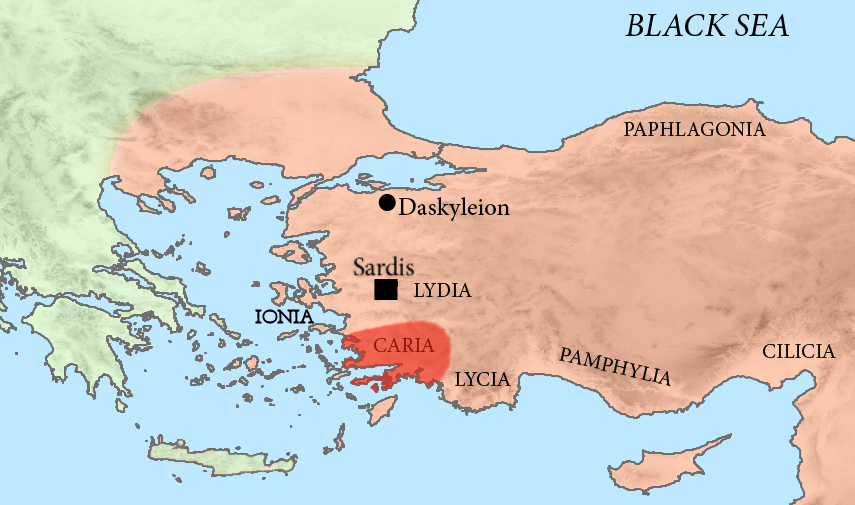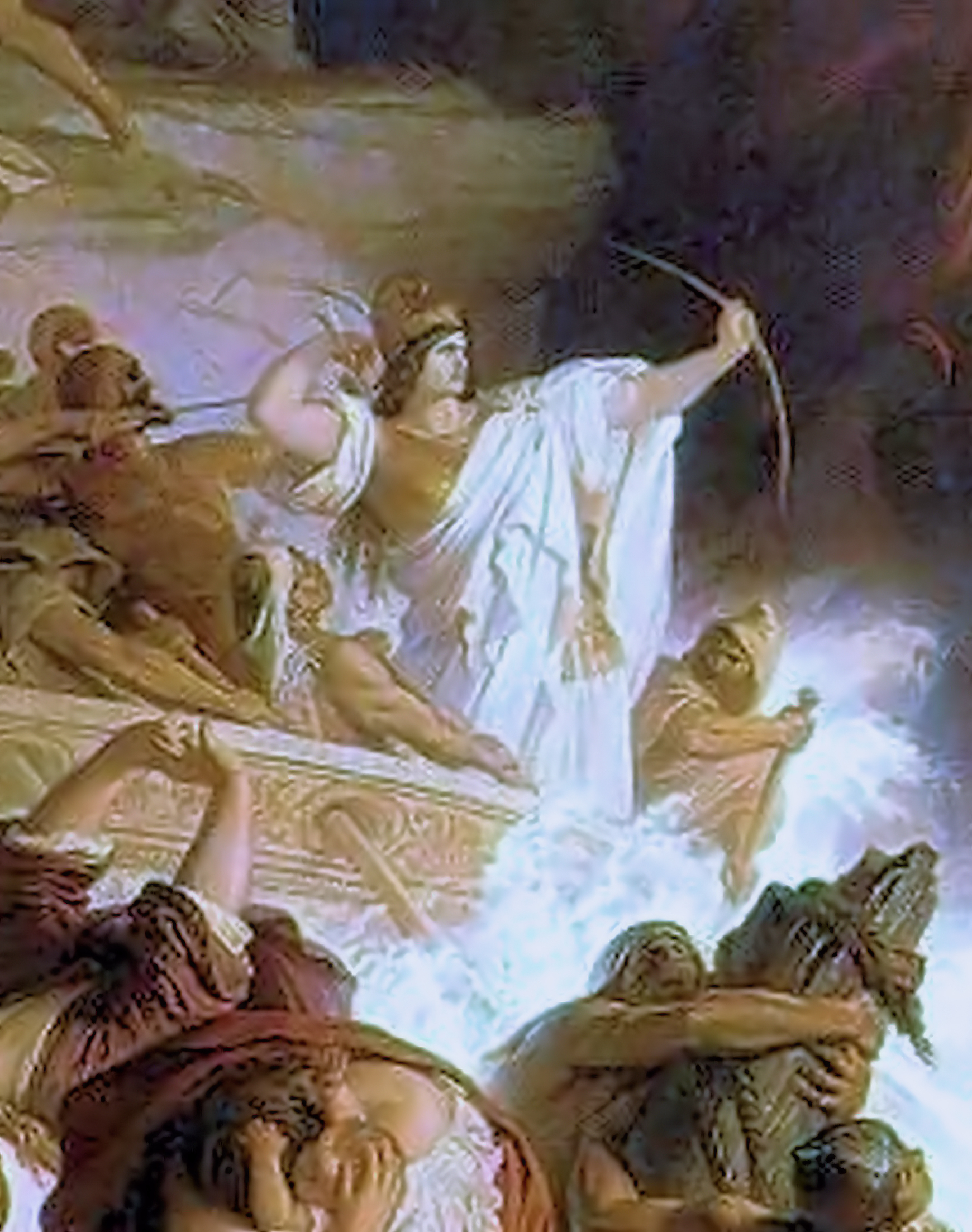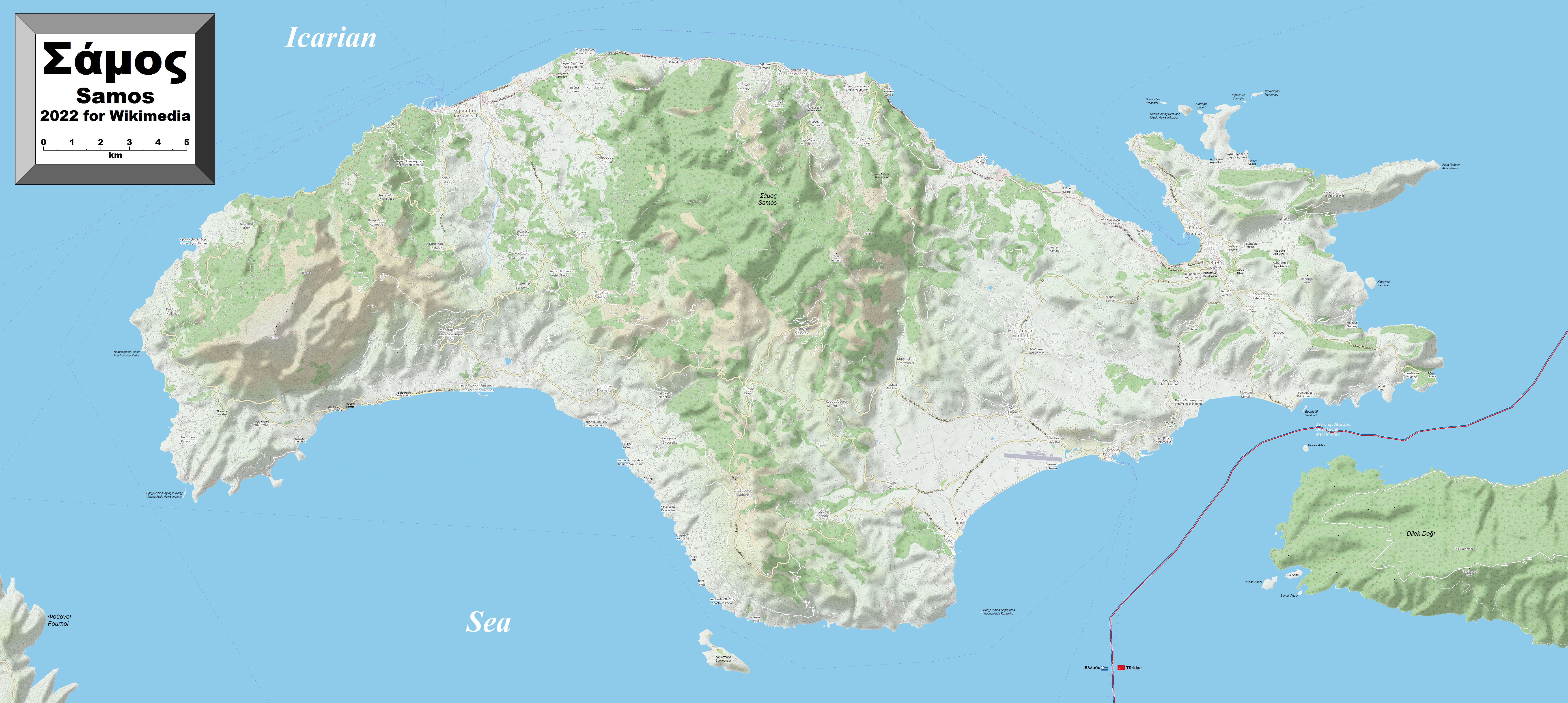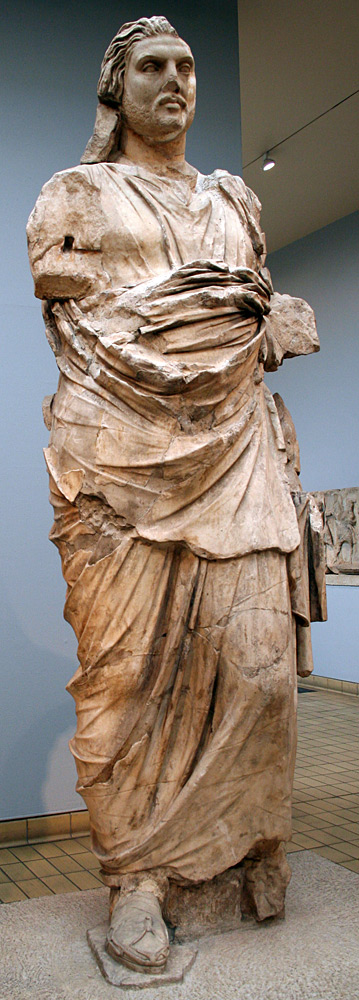|
Lygdamis II Of Halicarnassus
Lygdamis II () (ruled c.460-454 BCE) was a tyrant of Caria during the 5th century BCE, under the Achaemenid Empire. His capital was in Halicarnassus. He was the grandson of Artemisia, and son of Pisindelis, the previous tyrant. Lygdamis assassinated the poet Panyassis, uncle of famous historian Herodotus, in 461, which forced Herodotus to leave his native city of Halicarnassus, fleeing to the island of Samos. After the death of Lygdamis, circa 454 BCE, Halicarnassus joined the Athenian alliance, known as the Delian League The Delian League was a confederacy of Polis, Greek city-states, numbering between 150 and 330, founded in 478 BC under the leadership (hegemony) of Classical Athens, Athens, whose purpose was to continue fighting the Achaemenid Empire, Persian .... At that time, Halicarnassus started to appear on the Athenian tribute quota lists. From 395 BCE, Caria would again fall under the control of the Achaemenid Empire and be ruled by a new dynasty of local tyran ... [...More Info...] [...Related Items...] OR: [Wikipedia] [Google] [Baidu] |
Caria
Caria (; from Greek language, Greek: Καρία, ''Karia''; ) was a region of western Anatolia extending along the coast from mid-Ionia (Mycale) south to Lycia and east to Phrygia. The Carians were described by Herodotus as being Anatolian mainlanders and they called themselves Caria because of the name of their king.''The Histories'', Book I Section 171. He reports the Carians themselves maintained that they were Anatolian mainlanders intensely engaged in seafaring and were akin to the Mysians and the Lydians. The Carians spoke Carian language, Carian, a native Anatolian language closely related to Luwian language, Luwian. Also closely associated with the Carians were the Leleges, which could be an earlier name for Carians. Municipalities of Caria Cramer's detailed catalog of Carian towns is based entirely on ancient sources. The multiple names of towns and geomorphic features, such as bays and headlands, reveal an ethnic layering consistent with the known colonization. ... [...More Info...] [...Related Items...] OR: [Wikipedia] [Google] [Baidu] |
Tyrant
A tyrant (), in the modern English usage of the word, is an absolute ruler who is unrestrained by law, or one who has usurped a legitimate ruler's sovereignty. Often portrayed as cruel, tyrants may defend their positions by resorting to repressive means. The original Greek term meant an absolute sovereign who came to power without constitutional right, yet the word had a neutral connotation during the Archaic and early Classical periods. However, Greek philosopher Plato saw ''tyrannos'' as a negative form of government, and on account of the decisive influence of philosophy on politics, deemed tyranny the "fourth and worst disorder of a state."Plato, ''The Republic'' Book VIII The philosophers Plato and Aristotle defined a tyrant as a person who rules without law, using extreme and cruel methods against both his own people and others. The ''Encyclopédie'' defined the term as a usurper of sovereign power who makes "his subjects the victims of his passions and unjust ... [...More Info...] [...Related Items...] OR: [Wikipedia] [Google] [Baidu] |
Achaemenid Empire
The Achaemenid Empire or Achaemenian Empire, also known as the Persian Empire or First Persian Empire (; , , ), was an Iranian peoples, Iranian empire founded by Cyrus the Great of the Achaemenid dynasty in 550 BC. Based in modern-day Iran, it was the List of largest empires#Timeline of largest empires to date, largest empire by that point in history, spanning a total of . The empire spanned from the Balkans and ancient Egypt, Egypt in the west, most of West Asia, the majority of Central Asia to the northeast, and the Indus Basin, Indus Valley of South Asia to the southeast. Around the 7th century BC, the region of Persis in the southwestern portion of the Iranian plateau was settled by the Persians. From Persis, Cyrus rose and defeated the Medes, Median Empire as well as Lydia and the Neo-Babylonian Empire, marking the establishment of a new imperial polity under the Achaemenid dynasty. In the modern era, the Achaemenid Empire has been recognised for its imposition of a succ ... [...More Info...] [...Related Items...] OR: [Wikipedia] [Google] [Baidu] |
Halicarnassus
Halicarnassus ( ; Latin: ''Halicarnassus'' or ''Halicarnāsus''; ''Halikarnāssós''; ; Carian language, Carian: 𐊠𐊣𐊫𐊰 𐊴𐊠𐊥𐊵𐊫𐊰 ''alos k̂arnos'') was an ancient Greece, ancient Greek city in Caria, in Anatolia.Livius.org Halicarnassus/Bodrum "Usually, Greek settlers first occupied an island near a native settlement; later, they settled on the mainland. We may assume that the first Greeks built their houses on the island that was later known as the Royal Island. Today, it is no longer an island, but an impressive castle built in the age of the Crusades. The native settlement probably was at the Salmacis hill, which was crowned by a sanctuary of Hermaphroditus.", "Later, the Greeks settled on the mainland. To the northeast of the island, they founded a marketplace to t ... [...More Info...] [...Related Items...] OR: [Wikipedia] [Google] [Baidu] |
Artemisia I Of Caria
Artemisia I of Caria (, ; Floruit, fl. 480 BC) was a queen of the ancient Greek city-state of Halicarnassus, which is now in Bodrum, present-day Turkey. She was also queen of the nearby islands of Kos, Nisyros and Kalymnos,Enc. Britannica, "Artemisia I" within the Achaemenid dynasty, Achaemenid satrapy of Caria, in about 480 BC. She was of Carians, Carian-Greek ethnicity by her father Lygdamis I, and half-Crete, Cretan by her mother. She fought as an ally of Xerxes I, Xerxes I, King of Persia against the independent Ancient Greece, Greek city states during the second Persian invasion of Greece. She personally commanded ships at the naval battle of Artemisium and at the naval Battle of Salamis in 480 BC. She is mostly known through the writings of Herodotus of Halicarnassus, Herodotus, himself a native of Halicarnassus, who praises her courage and relates the respect in which she was held by Xerxes. Family Artemisia's father was the satrap of Halicarnassus, Lygdamis of Halicar ... [...More Info...] [...Related Items...] OR: [Wikipedia] [Google] [Baidu] |
Pisindelis
Pisindelis (), ruled c.460–450 BCE, was a tyrant of Caria, from its capital Halicarnassus, under the Achaemenid Empire. He was the son of Artemisia I of Caria, and part of the Lygdamid dynasty. He was said to be a young man already at the time his mother Artemisia fought at the head of the Carian fleet at the Battle of Salamis (479 BCE) under King Xerxes I. C.T. Newton «On an inscription from Halicarnassus, relating to Lygdamis» in ''Transactions of the Royal Society of Literature of the United Kingdom'', J. Murray, 1870, p.19/ref> He is mentioned by Herodotus as he described the involvement of his mother at Salamis: He probably had to abandon his throne around 452-449 BCE. His son was Lygdamis II of Halicarnassus, Lygdamis II, last tyrant of the Lygdamid dynasty, before Caria joined the Athenian alliance of the Delian League The Delian League was a confederacy of Polis, Greek city-states, numbering between 150 and 330, founded in 478 BC under the leadership (hegemony ... [...More Info...] [...Related Items...] OR: [Wikipedia] [Google] [Baidu] |
Panyassis
Panyassis of Halicarnassus, sometimes known as Panyasis (), was a 5th-century BC Greek epic poet from Halicarnassus in the Persian Empire (modern-day Bodrum, Turkey). Life Panyassis was the son of Polyarchus () from Halicarnassus, but the historian Duris of Samos claimed that Panyasis was the son of Diocles () and from Samos. In addition, the historian Herodotus was either his nephew or his cousin. There was also another person of the same name, possibly the grandson of the poet, who wrote a work in two books on dreams. In 454 BC, Panyassis was executed for political activities by the tyrant of Halicarnassus and grandson of Artemisia, Lygdamis ΙΙ (), after an unsuccessful uprising against him. Panyasis was ranked by the Alexandrian School with the great epic poets. The Suda encyclopedia mentions Panyassis. Works Panyassis enjoyed relatively little critical appreciation during his lifetime, but was posthumously recognised as one of the greatest poets of archaic Greece. ... [...More Info...] [...Related Items...] OR: [Wikipedia] [Google] [Baidu] |
Herodotus
Herodotus (; BC) was a Greek historian and geographer from the Greek city of Halicarnassus (now Bodrum, Turkey), under Persian control in the 5th century BC, and a later citizen of Thurii in modern Calabria, Italy. He wrote the '' Histories'', a detailed account of the Greco-Persian Wars, among other subjects such as the rise of the Achaemenid dynasty of Cyrus. He has been described as " The Father of History", a title conferred on him by the ancient Roman orator Cicero, and the " Father of Lies" by others. The ''Histories'' primarily cover the lives of prominent kings and famous battles such as Marathon, Thermopylae, Artemisium, Salamis, Plataea, and Mycale. His work deviates from the main topics to provide a cultural, ethnographical, geographical, and historiographical background that forms an essential part of the narrative and provides readers with a wellspring of additional information. Herodotus was criticized in his times for his inclusion of "legends an ... [...More Info...] [...Related Items...] OR: [Wikipedia] [Google] [Baidu] |
Samos
Samos (, also ; , ) is a Greek island in the eastern Aegean Sea, south of Chios, north of Patmos and the Dodecanese archipelago, and off the coast of western Turkey, from which it is separated by the Mycale Strait. It is also a separate regional unit of the North Aegean region. In ancient times, Samos was an especially rich and powerful city-state, particularly known for its vineyards and wine production. It is home to Pythagoreion and the Heraion of Samos, a UNESCO World Heritage Site that includes the Eupalinian aqueduct, a marvel of ancient engineering. Samos is the birthplace of the Greek philosopher and mathematician Pythagoras, after whom the Pythagorean theorem is named, the philosophers Melissus of Samos and Epicurus, and the astronomer Aristarchus of Samos, the first known individual to propose that the Earth revolves around the Sun. Samian wine was well known in antiquity and is still produced on the island. The island was governed by the semi-autonomous P ... [...More Info...] [...Related Items...] OR: [Wikipedia] [Google] [Baidu] |
Delian League
The Delian League was a confederacy of Polis, Greek city-states, numbering between 150 and 330, founded in 478 BC under the leadership (hegemony) of Classical Athens, Athens, whose purpose was to continue fighting the Achaemenid Empire, Persian Empire after the Greek victory in the Battle of Plataea at the end of the Second Persian invasion of Greece. The League functioned as a dual –offensive and defensive– alliance (''Symmachia (alliance), symmachia'') of autonomous states, similar to its rival association, the Peloponnesian League. The League's modern name derives from its official meeting place, the island of Delos, where congresses were held within the sanctuary of the Temple of Apollo; contemporary authors referred to the organization simply as "the Athenians and their Allies". While Sparta excelled as Greece's greatest power on land, Athens turned to the seas becoming the dominant naval power of the Ancient Greece, Greek world. Following Sparta's withdrawal from the Gr ... [...More Info...] [...Related Items...] OR: [Wikipedia] [Google] [Baidu] |
Hecatomnids
The Hecatomnid dynasty or Hecatomnids were the rulers of Caria and surrounding areas BCE. They were satraps (governors) under the Achaemenid Empire, although they ruled with considerable autonomy as a hereditary dynasty. The dynasty had previously ruled the city of Mylasa, which became the capital of Hecatomnus, the first indigenous satrap of Caria. The dynastic capital was moved to Halicarnassus by Mausolus and Artemisia II of Caria, Artemisia, who built the Mausoleum at Halicarnassus, one of the Seven Wonders of the Ancient World, there. The dynasty survived the Alexander_the_Great#Conquest_of_the_Achaemenid_Persian_Empire, conquest of the Achaemenid Empire by Alexander the Great when Ada of Caria, Ada I, the final Hecatomnid ruler of Caria, adopted Alexander the Great as her son. The small family was remarkable for containing so many sets of sibling marriage, married siblings. Early history The earliest known member of the Hecatomnid family was the dynast Hyssaldomus. He w ... [...More Info...] [...Related Items...] OR: [Wikipedia] [Google] [Baidu] |
Ancient Halicarnassians
Ancient history is a time period from the beginning of writing and recorded human history through late antiquity. The span of recorded history is roughly 5,000 years, beginning with the development of Sumerian cuneiform script. Ancient history covers all continents inhabited by humans in the period 3000 BCAD 500, ending with the expansion of Islam in late antiquity. The three-age system periodises ancient history into the Stone Age, the Bronze Age, and the Iron Age, with recorded history generally considered to begin with the Bronze Age. The start and end of the three ages vary between world regions. In many regions the Bronze Age is generally considered to begin a few centuries prior to 3000 BC, while the end of the Iron Age varies from the early first millennium BC in some regions to the late first millennium AD in others. During the time period of ancient history, the world population was exponentially increasing due to the Neolithic Revolution, which was in full progr ... [...More Info...] [...Related Items...] OR: [Wikipedia] [Google] [Baidu] |







